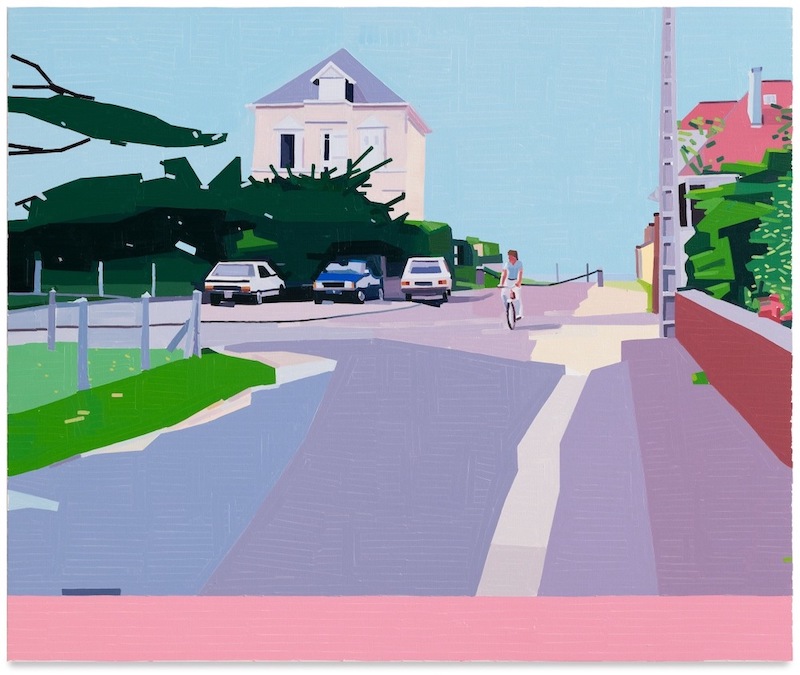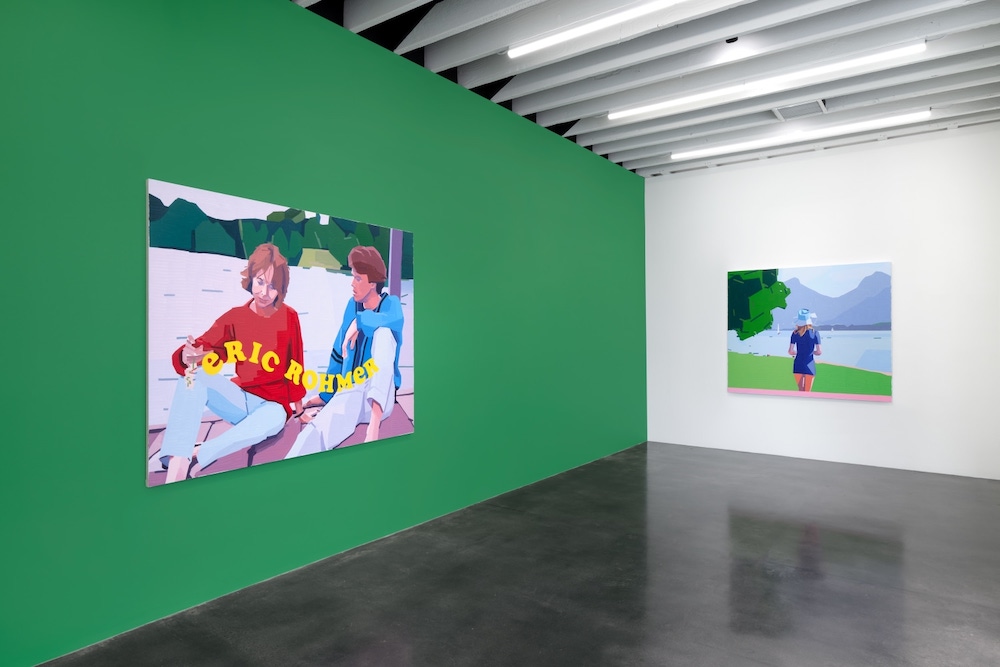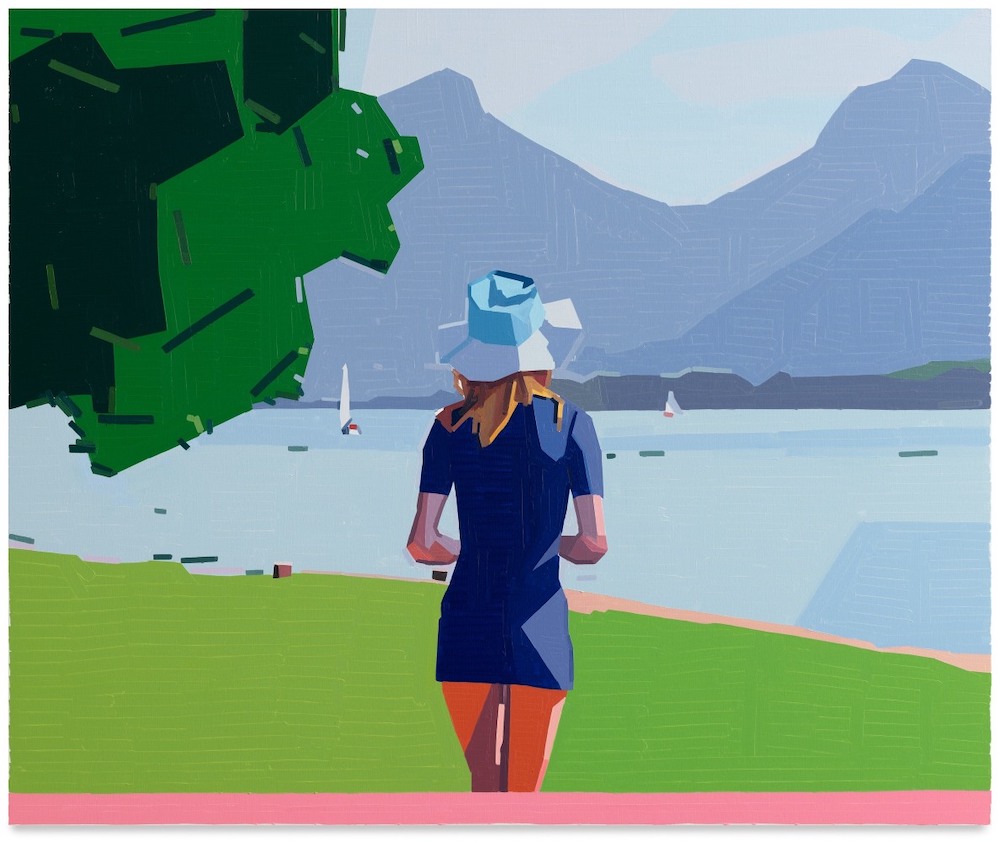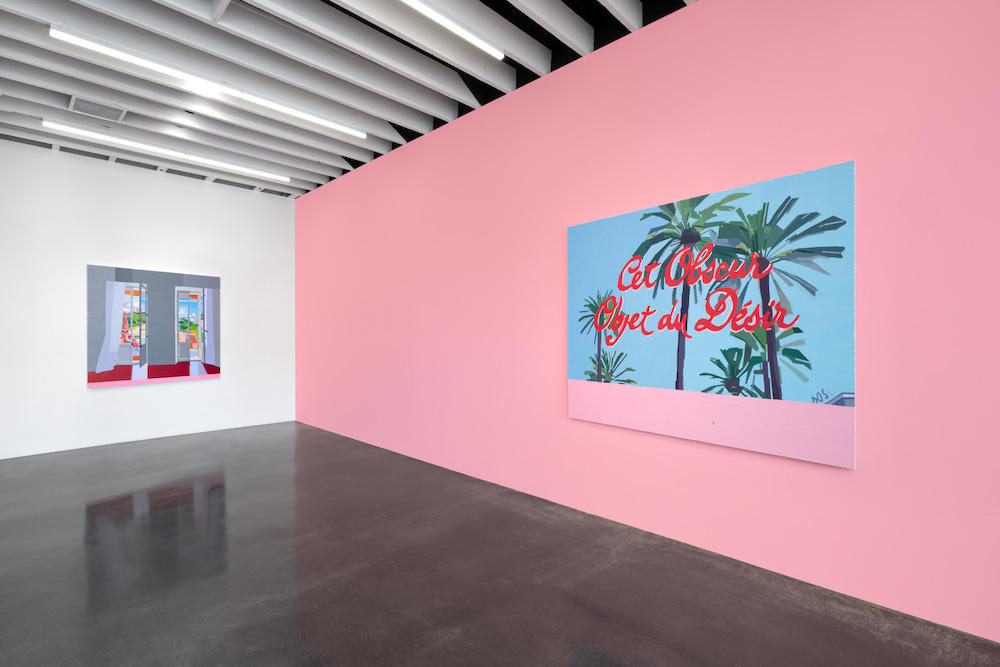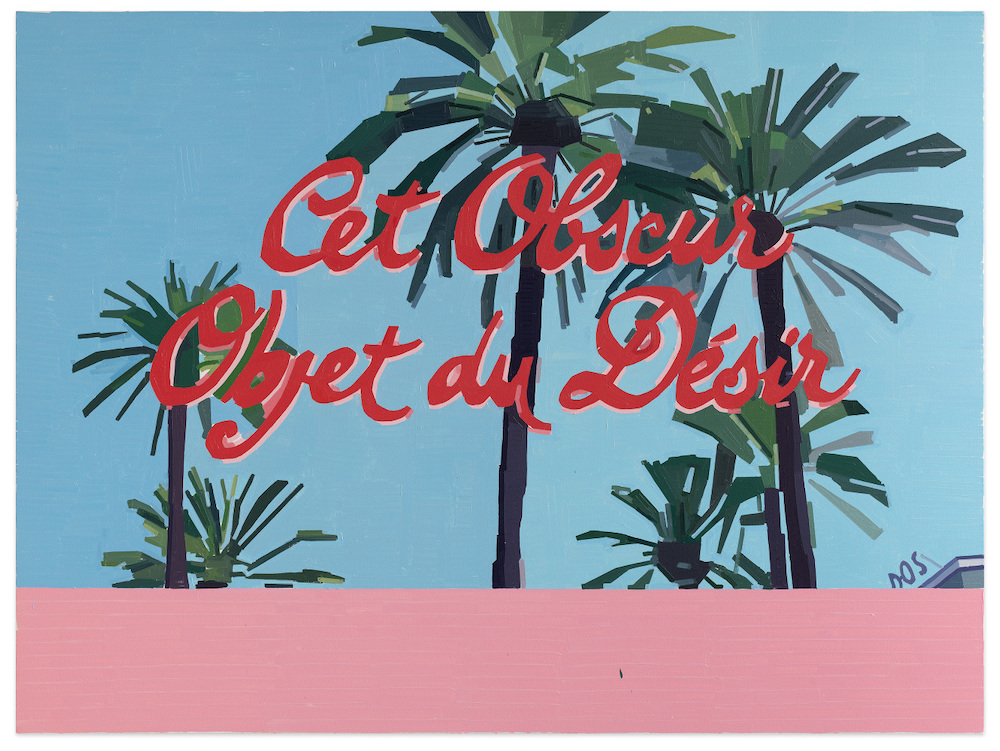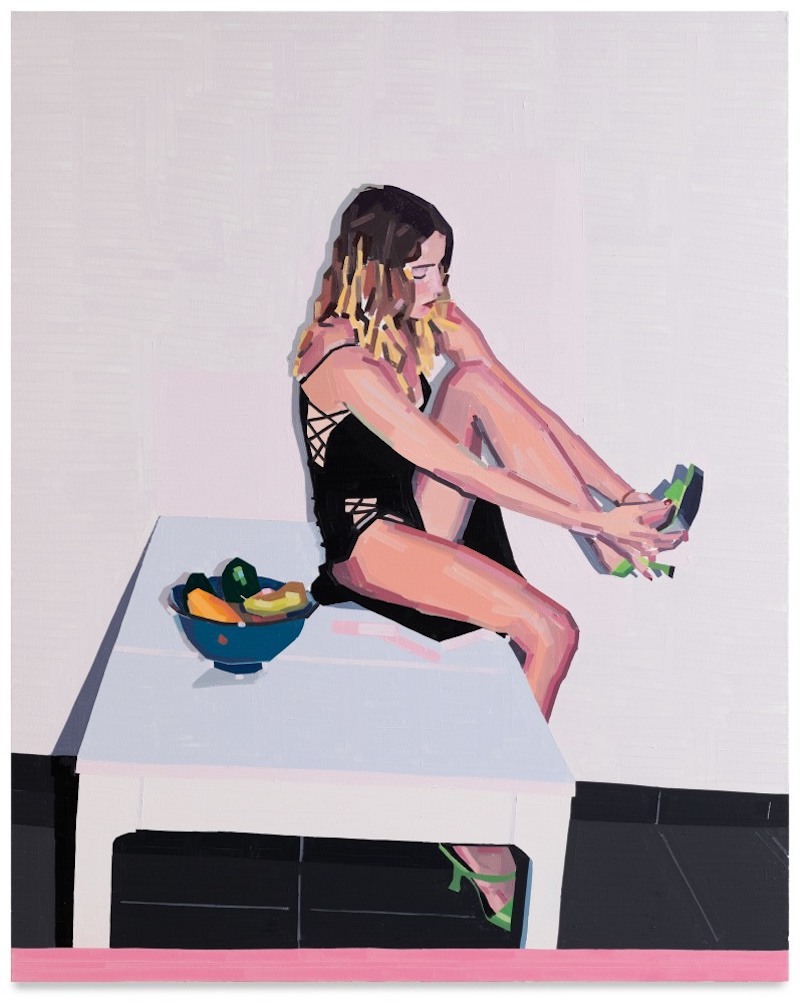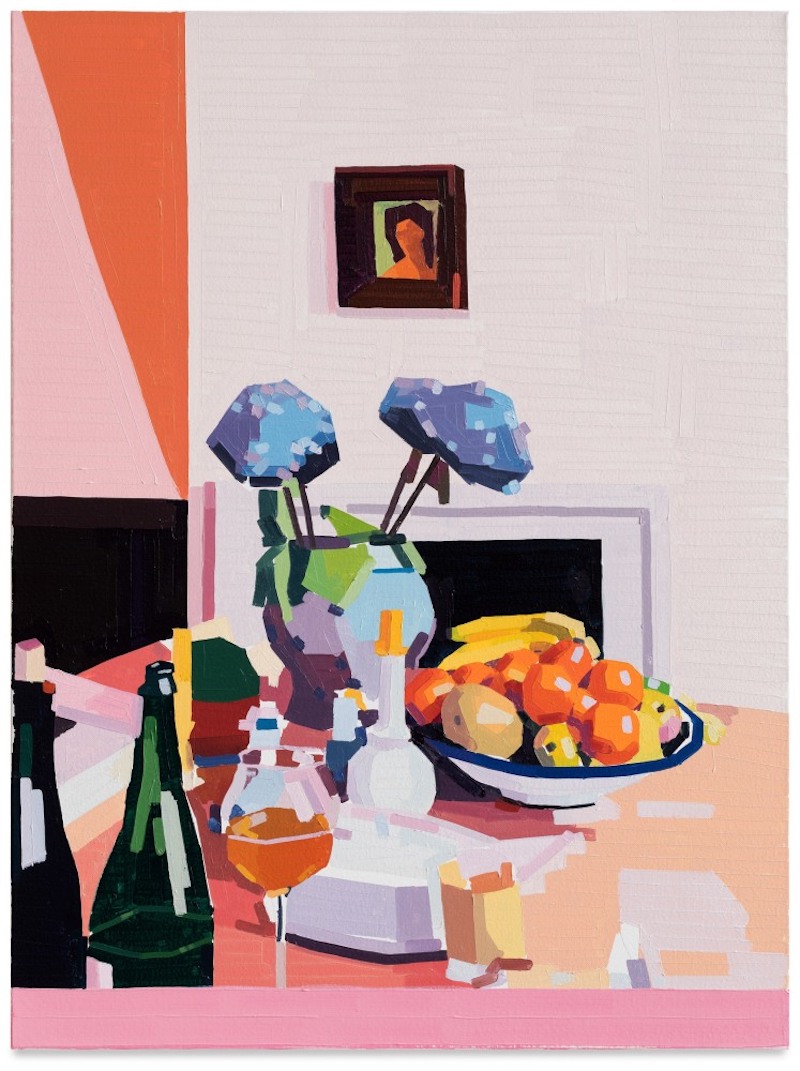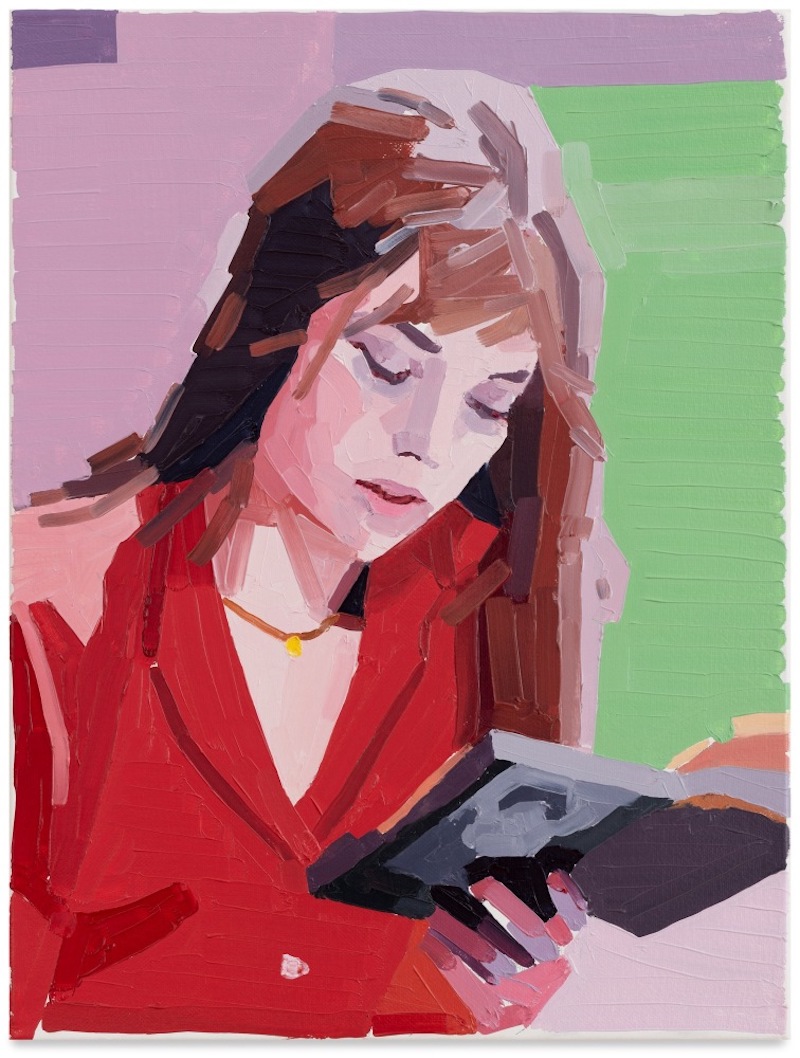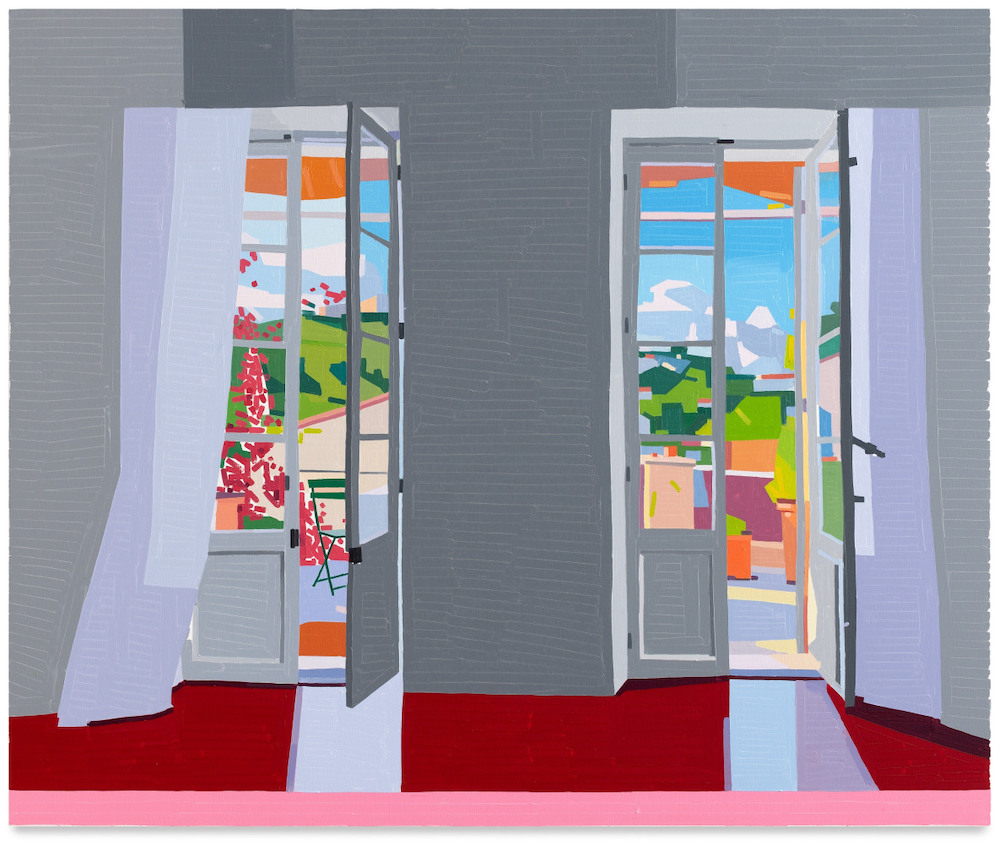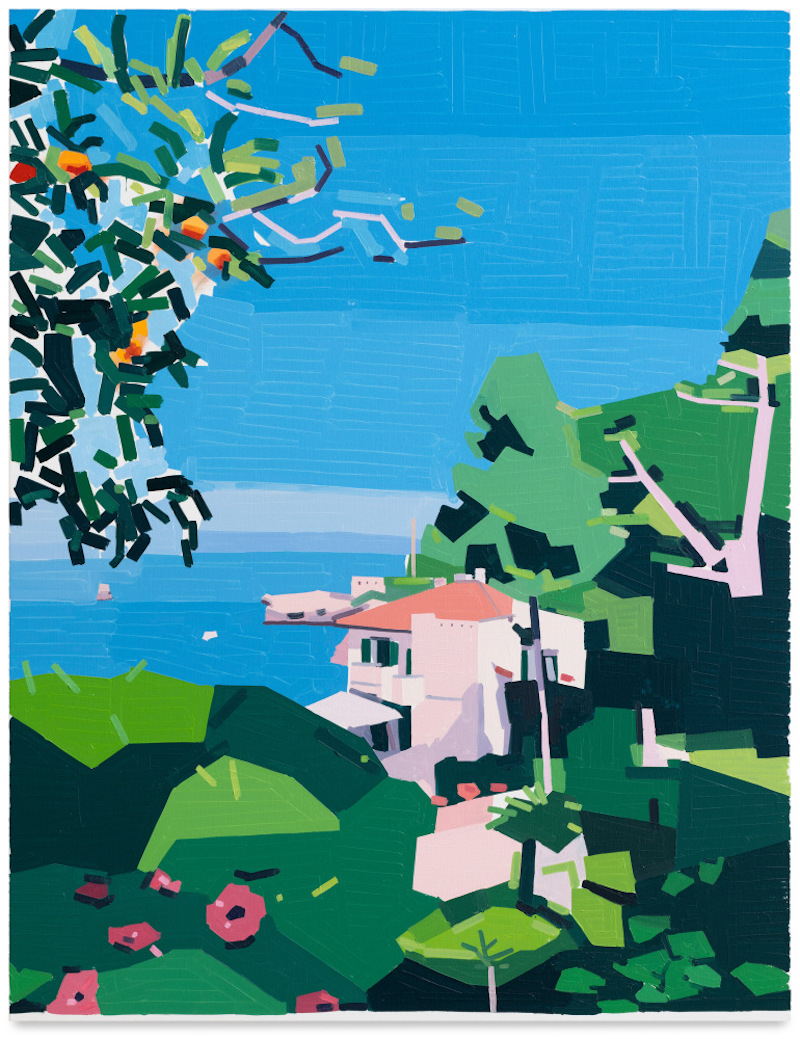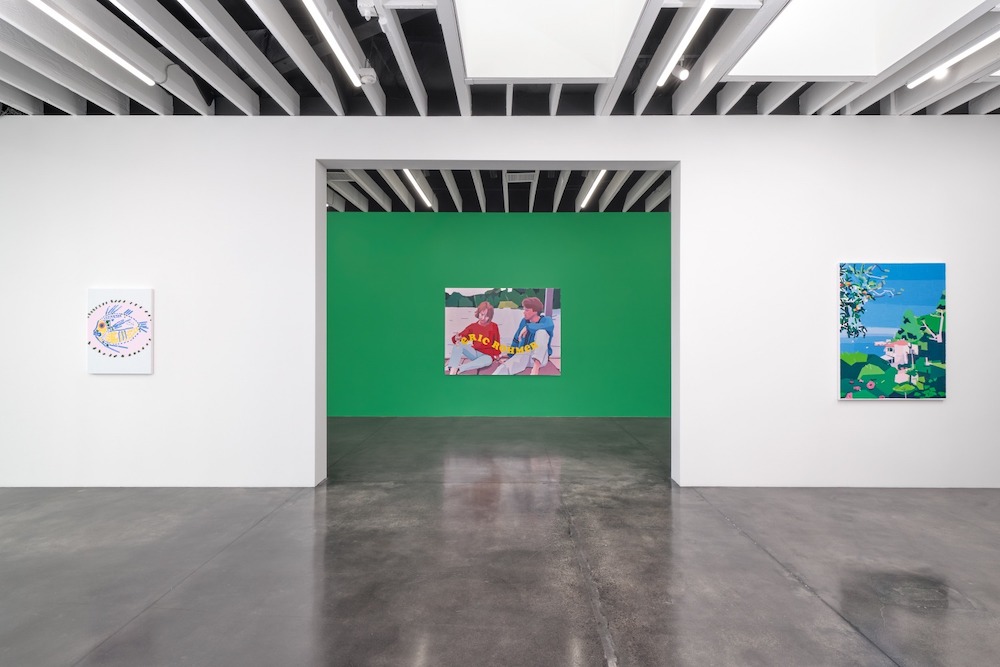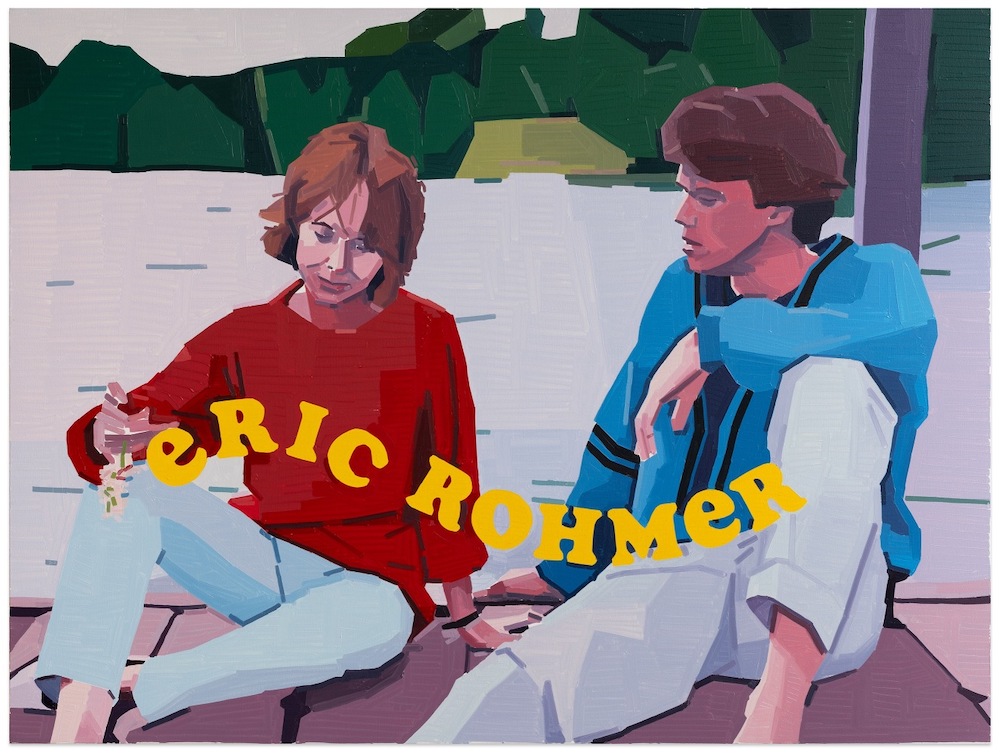Harper’s is pleased to announce Finding Time Again, Guy Yanai’s first exhibition with the gallery since his 2016 solo presentation at Harper’s East Hampton. Borrowing the title from Marcel Proust’s seventh and final volume of In Search of Lost Time, published posthumously in 1927, Yanai presents ten paintings depicting a diverse range of subjects, including portraits, landscapes, interior scenes, and cinematic reminiscences.
In Finding Time Again, each painting serves as an entrancing vignette. Yanai recalls a moment from an Eric Rohmer film where a couple converses on a dock; he captures the gentle movement of gauzy curtains in front of interior doors overlooking the hills of Roucas-Blanc and the Plage du Prophète; he recreates a photograph of the French model Laetitia Casta, depicting her direct gaze at the camera. Gathering these moments under a Proustian title suggests thinking about how these works rely on access to, or recovery of, the artist’s own memories of experiences, images, or films—such as Rohmer’s Boyfriends and Girlfriends (1987) and Luis Buñuel’s That Obscure Object of Desire (1977).
Yanai draws from many sources and his interests are diffuse, but above all, he is invested in what it is that makes a painting. As Nuit Banai once described Yanai’s works, “each canvas is a temporary assemblage, a…point in time that captures an unexpected and unscripted constellation of collective forms, utterances, and desires, and transforms them into new formal possibilities for painting.” Yanai explores these formal possibilities in ways that work and play with the conventions of representational painting—the subjects and forms that are its mainstays, its history, and its associations. In Young Woman and Fruit, for instance, a bowl that could serve as the subject of a still life plays perhaps a more active role, anchoring the composition of a larger voyeuristic fantasy.
Several canvases are punctuated with horizontal bands of pink or white that together ensure the painting is not experienced as an immersive window into a world beyond, or even within. Instead, this choice emphasizes the painting as painting; a depiction that, Yanai reminds us, has boundaries and conceptual purpose, and is not necessarily a strict representation. Paintings where these bands appear, as in Young Man Riding Bicycle or View Outside, may depict an observed time and place, but Yanai’s framing encourages the viewer to consider a similar moment that they themselves may have experienced.
Yanai’s painterly technique invites the viewer’s close approach, from which the materiality of each work is best understood. Made up of a sequence of thickly applied stripes, apprehended from this distance, each canvas reveals a physical tension that somewhat complicates the levity and leisure of a cherished memory that the works convey at first glance. Still, boldly composed in vibrant colors, Yanai’s paintings impart above all else an unmistakable pleasure: in keeping a precise and fleeting moment close by; in living; and in painting. —Tyler Coulton



